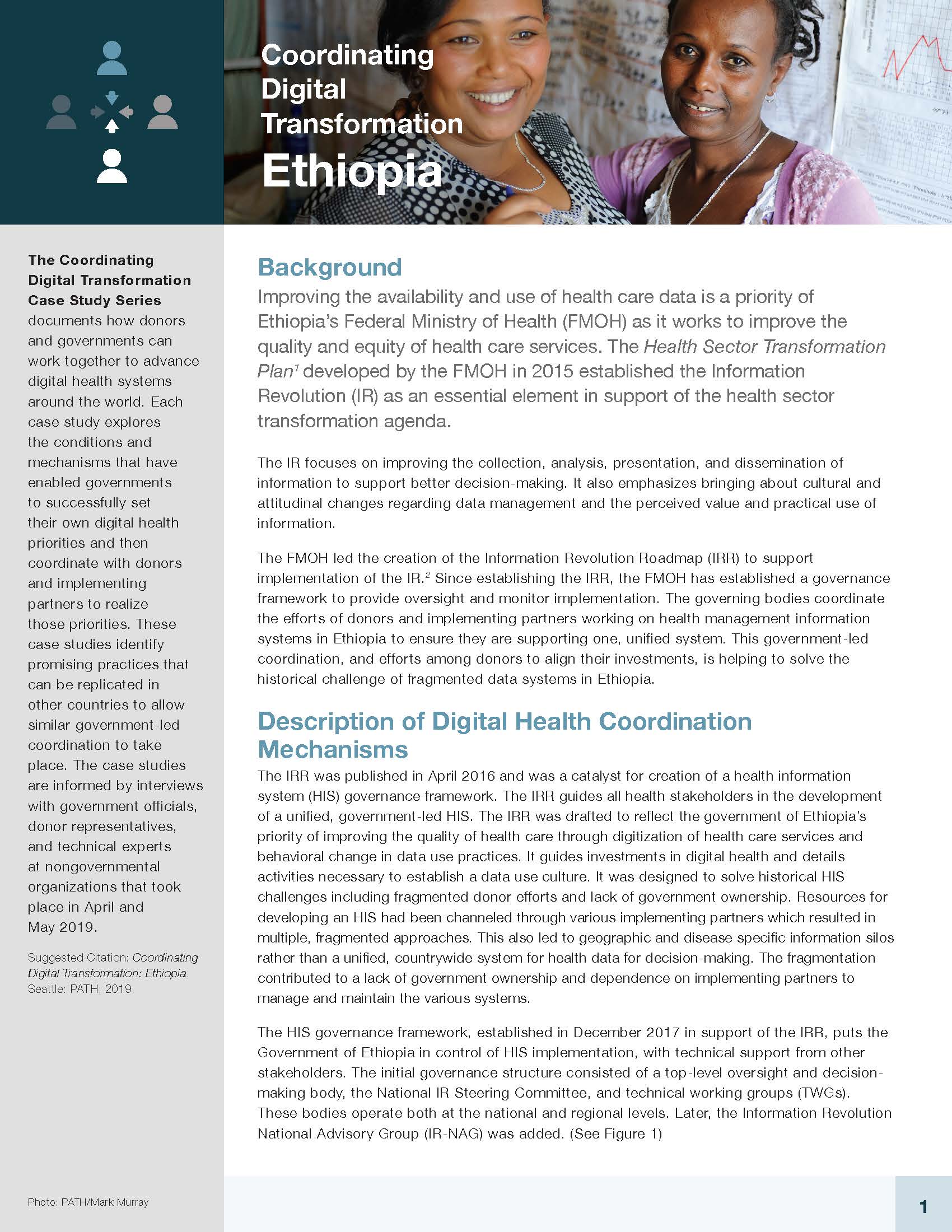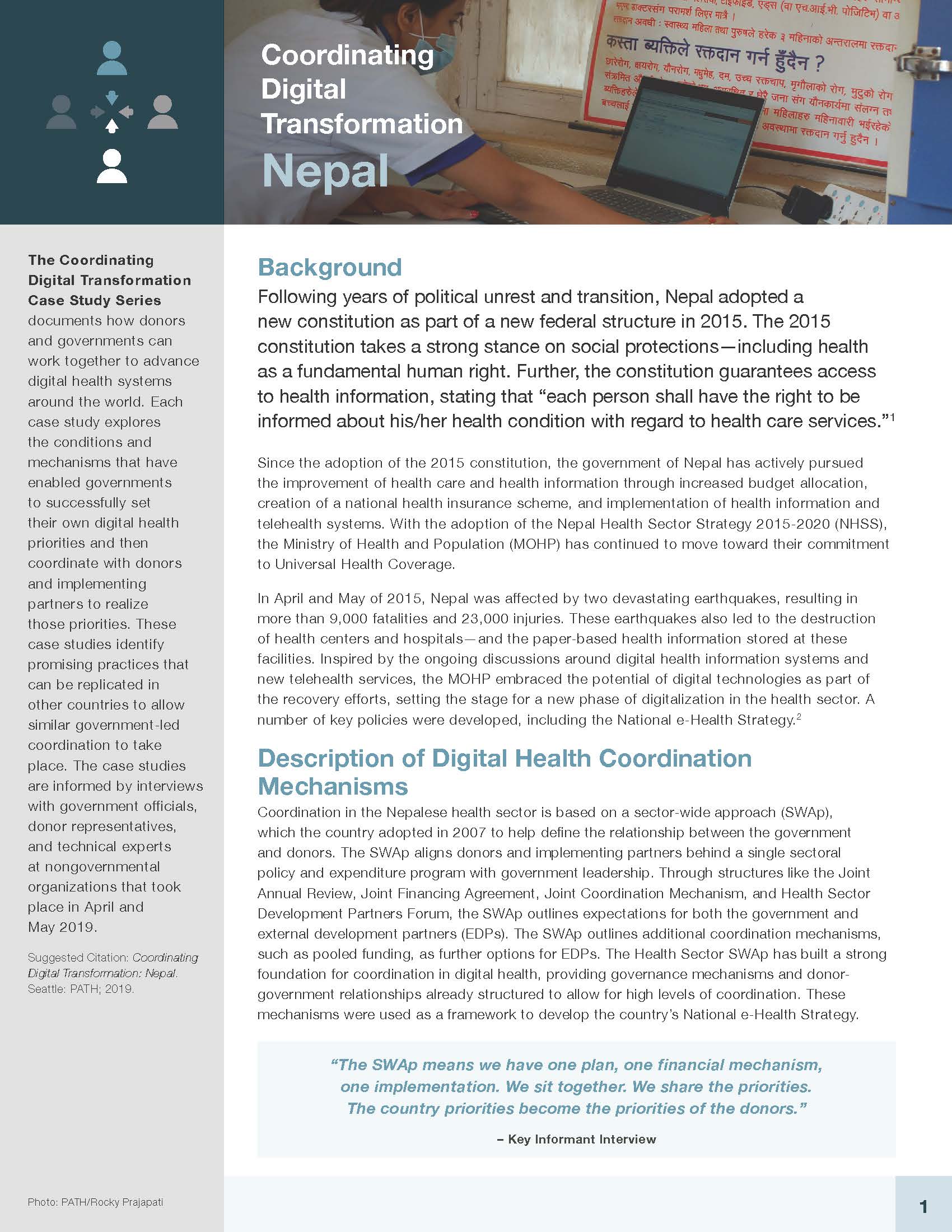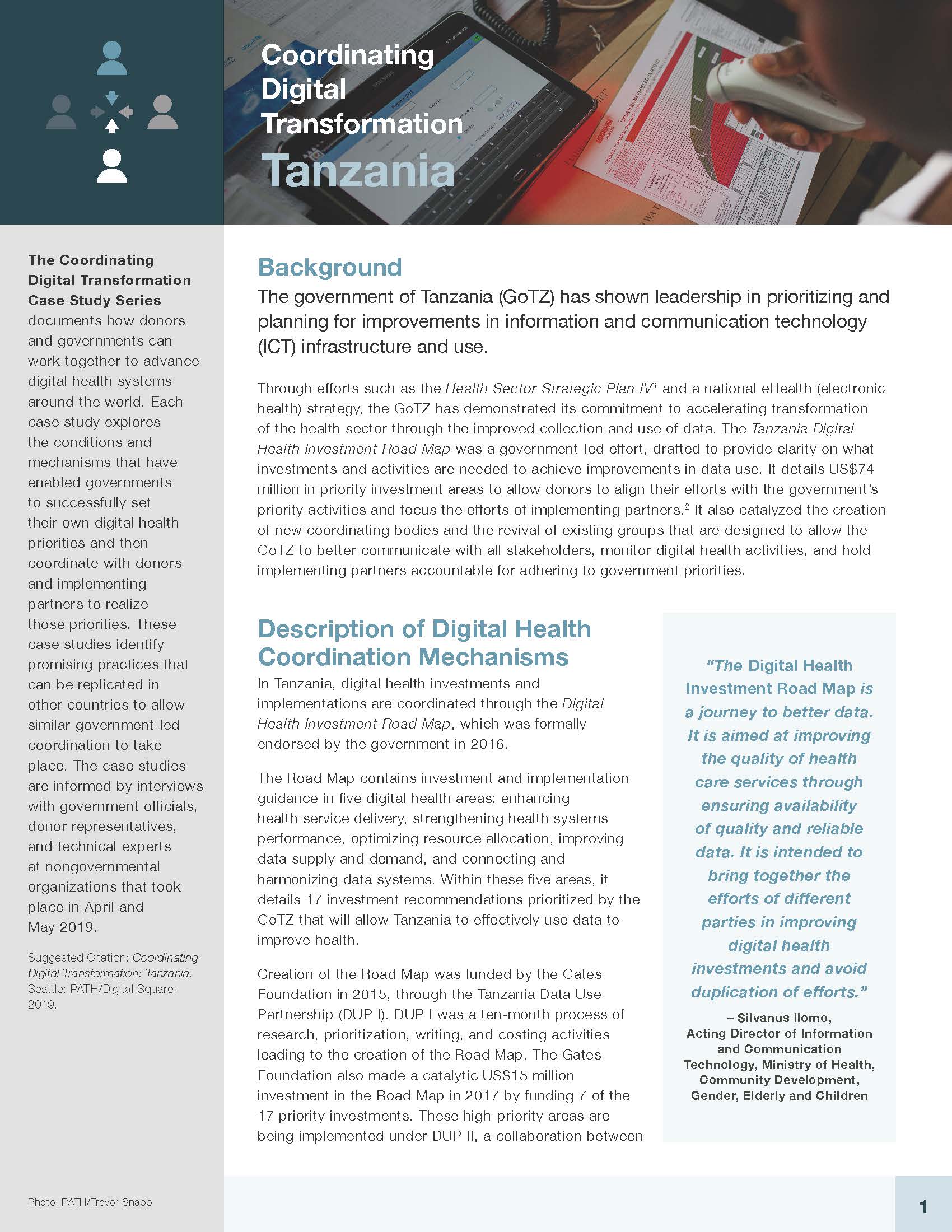Coordinating digital transformation: Three case studies
Digital technology has changed the way health information is collected, used, and communicated, and it has the potential to dramatically improve health service delivery. Health workers are better able to track and serve patients, health officials are better able to allocate resources, and patients have greater access to information to fulfill their health care needs. However, poor coordination in the digital health sector has led to duplicate systems, fragmented data, and frustration for health workers, decision-makers, and patients alike. The sector is recognizing this historic lack of coordination as a barrier to its collective success. To address it, governments and donors are forging a new way forward.
The Coordinating Digital Transformation case study series explores three examples of how stakeholders came together to create mechanisms for coordinating digital health investments and implementations, and as a result are improving the quality and use of health data.
The Ethiopia case study focuses on the Information Revolution Roadmap, which outlines steps to achieve cultural transformation for health data use, and the digitalization and scale-up of a country-wide health information system.
The Nepal case study focuses on the National e-Health Strategy, which outlines the use of electronic health solutions to strengthen the country’s health system.
The Tanzania case study focuses on the Digital Health Investment Road Map, which outlines investments aimed at delivering health system-level improvements that will lead to better health data quality and use.
The case studies aim to provide practical insights and specific actions for donors and governments based on the experiences of Ethiopia, Nepal, and Tanzania. An overview of the case studies consolidates these insights and activities as a tactical starting point for donors and governments alike as they embark on processes of coordination in the digital health sector and beyond.
Successful coordination in these three countries was largely a result of government leadership, a shared understanding of the digital health ecosystem, a shared vision of digital health, and strong governance structures. With governments serving as the primary focal point for coordination, donors and implementing partners were able to align behind the vision and priorities of the country. A shared understanding was derived from a comprehensive landscape analysis and realistic costing that included both tangible costs like hardware and more intangible costs like capacity building. Each partner understood their role, with formal partnership agreements and governance frameworks guiding the process. In each case, donors were also able to use their unique position for advocacy, resource mobilization, and capacity strengthening.
The case studies also present suggested actions for both governments and donors. Governments can incorporate digital approaches across their health sector strategies, identify a centralized institutional home for digital health programs, and articulate their specific vision for digital transformation. Donors can extend the capacity of governments through secondments and global experience, coordination with other donors in the space to align with government priorities, and support governments with a wide scope of activities to ensure uptake, scaling, and success of digital health technologies. More detailed activities can be found in the overview document.
Ethiopia, Nepal, and Tanzania are only three examples of how coordination is advancing digital transformation. The case study team encourages others to capture similar exemplars in order to celebrate this progress and continue to capture best practices for coordination. To support the creation of additional case studies, a guide was created that provides the methodology for key informant interviews, including the interview questionnaire and consent form, as well as the process used for analyzing and drafting the final documents. We sincerely hope that others will find this guide useful, and that together we can continue to expand our knowledge in this area.
To find out more about the case studies, ask questions about the guide to replication, or to share a new case study, please contact Digital Square (digitalsquare@path.org).




